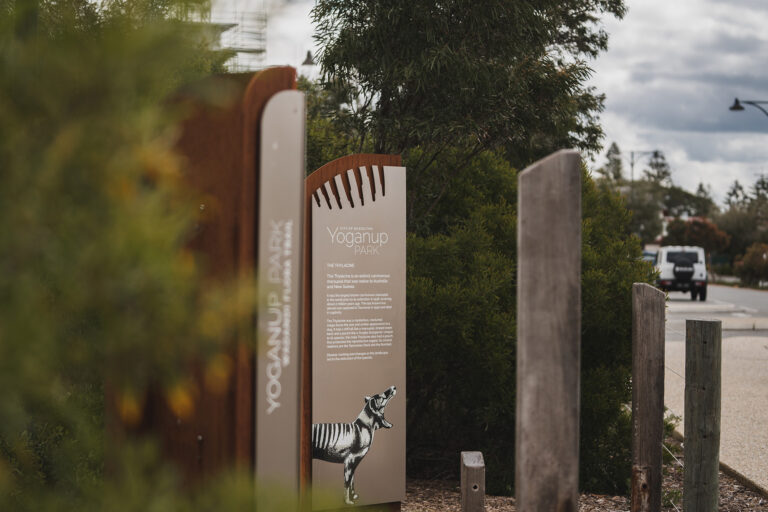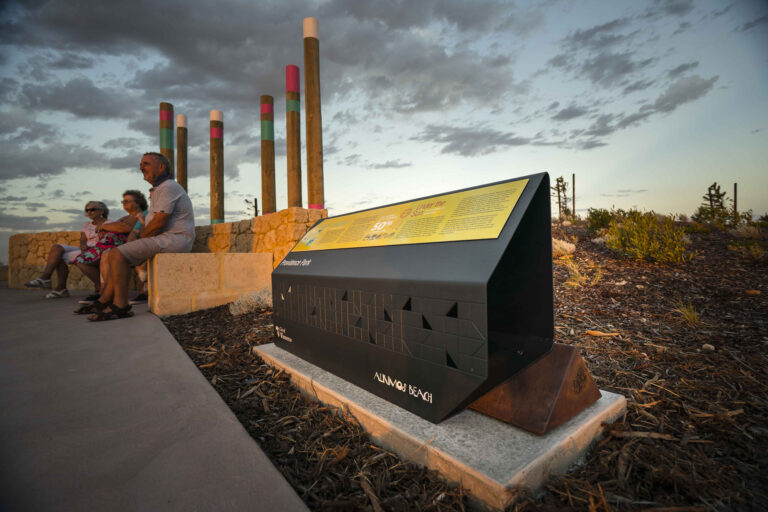Situated at various locations along the Swan River, such as Point Walter, Bicton Baths and Heathcote, the Swan-Canning Riverpark interpretative signs reclaim their site’s traditional Whadjuk names and explore their Aboriginal and European connections.
Publik worked collaboratively with the Department of Parks and Wildlife and the City of Melville to create interpretive nodes, complimenting the landscape architecture developed for the areas and creating a new connection to place for residents and visitors. The interpretative nodes display Aboriginal and European history and ecology and environmental information about each location.
Engraved and cut through aluminium welcome panels depict each location’s traditional Aboriginal name (respectively); Djoondalup (place of white sand), Kwoppa Kepa (beautiful water), Kooyagardup (place of the big nose frog) and Kaalitj-ngort Koondaam (dragonfly dreaming). Accompanying these panels are engraved aluminium floor strips with a traditional welcome to country and quotes from Whadjuk elders. The engraved aluminium welcome panels and floor strips were finished with an orbital finishing process.
Anodic printed interpretive panels display Aboriginal artwork and Whadjuk elders’ stories of each area that form a deeper connection to each place for all visitors. The interpretation also features European history of the sites, depicting how the sites were once used as a comparison to the recreational uses today. Each location has an additional panel with a call to action to a digital app and the Department of Biodiversity, Conservation and Attractions website, where visitors can access a series of audio stories shared by Whadjuk elders about the river and its significance. By sharing these stories visitors can gain a deeper understanding of what these special places mean. The anodic prints have a surface embedment of 20 microns and have a guaranteed warranty of 10 years, ensuring minimal maintenance will be required for panels across all locations.
Ecological and environmental information is also included on the interpretive signage to help visitors understand how the Riverpark works and all of the individual things that make up the environment, like local fish, wildlife and plants. Information on how to properly care for the environment and its inhabitants is also included so that residents and visitors can properly care for the area, ensuring that future generations can also enjoy it.
Publik installed the interpretive components at each location, keeping the sites clean and free of any debris, with minimal impact to the public who regularly use these parks. The installations complied with all safety requirements, keeping our install team and the general public safe, and ensured that all panels were securely fixed to the decking to protect users of the parks.












